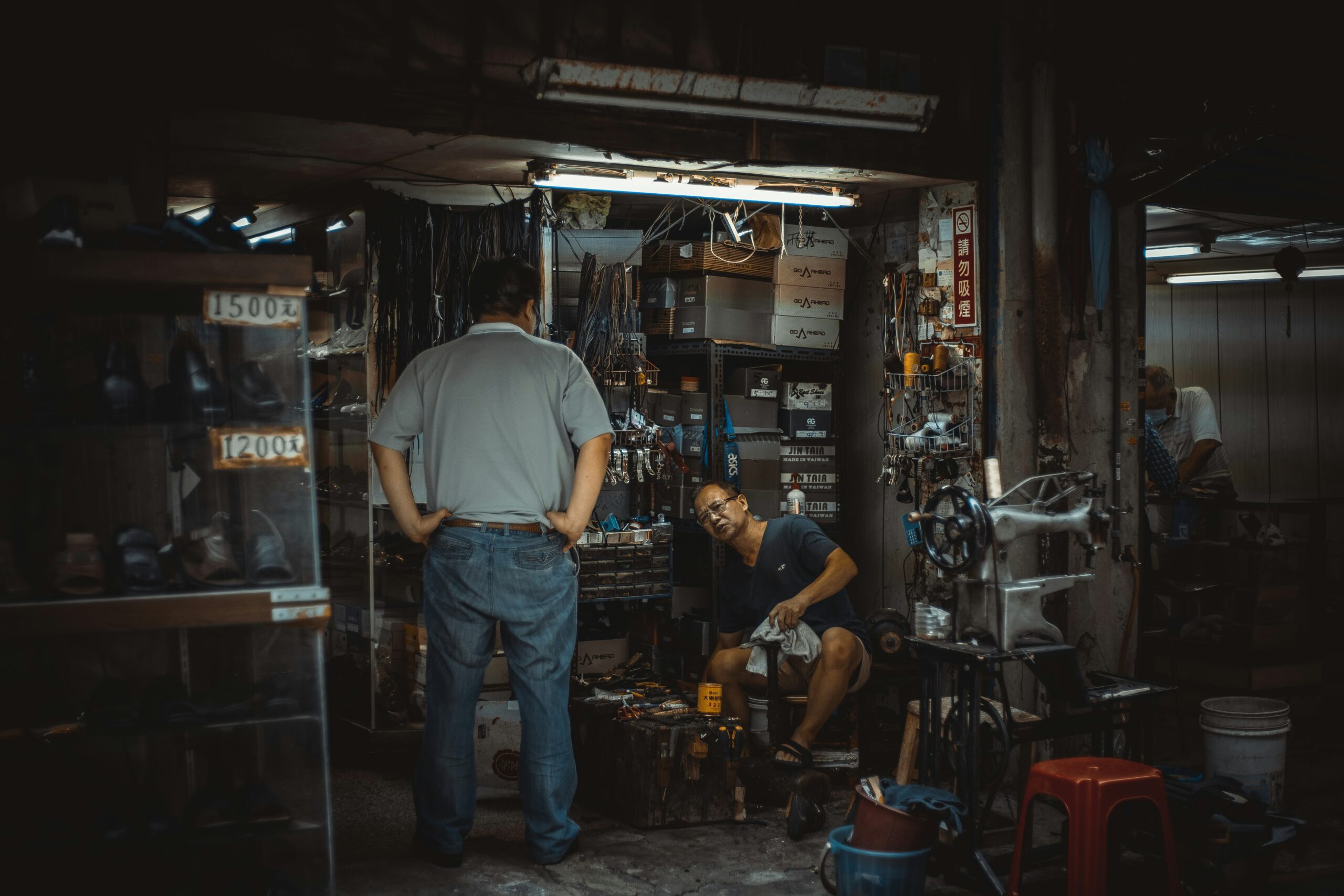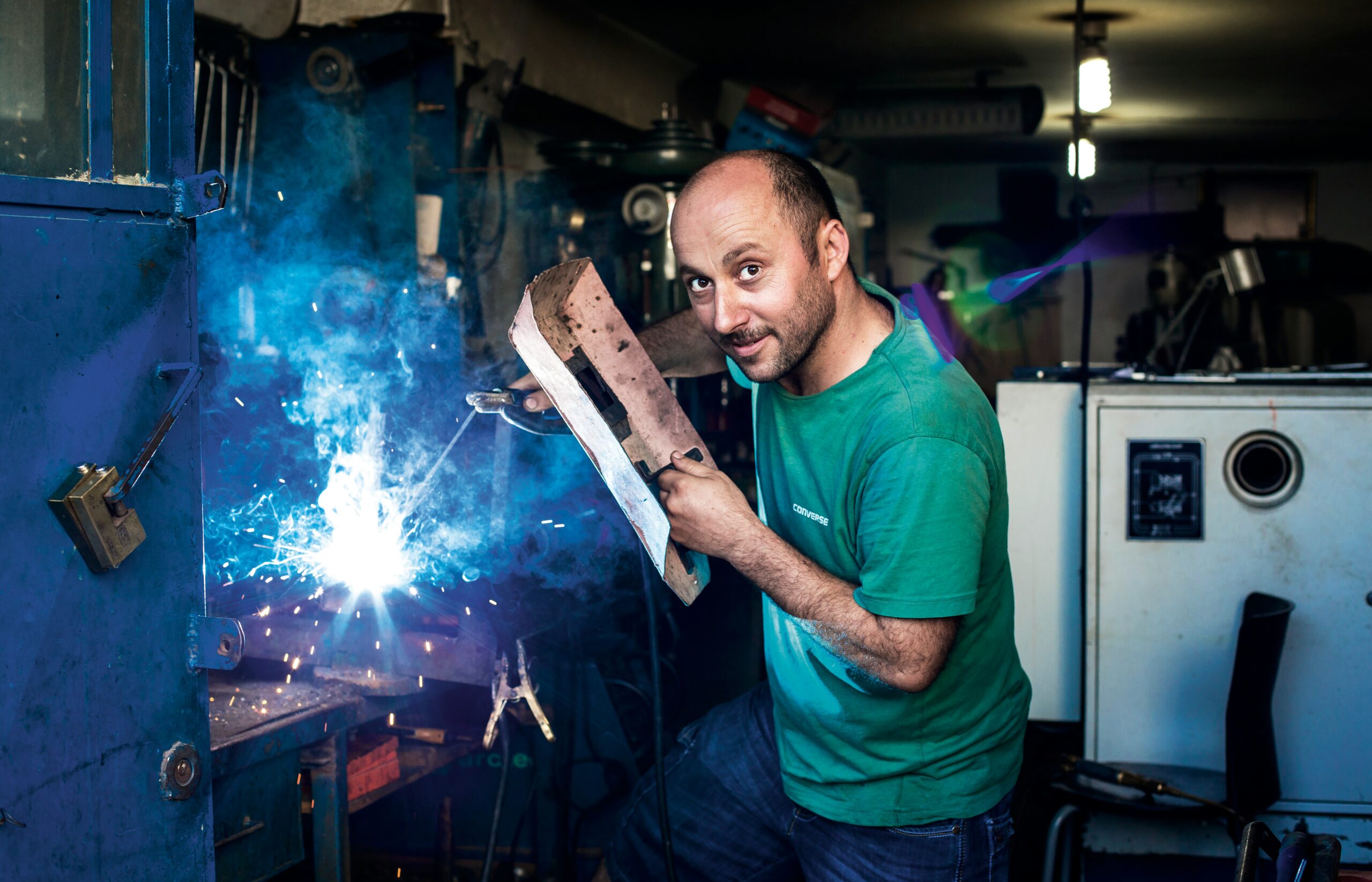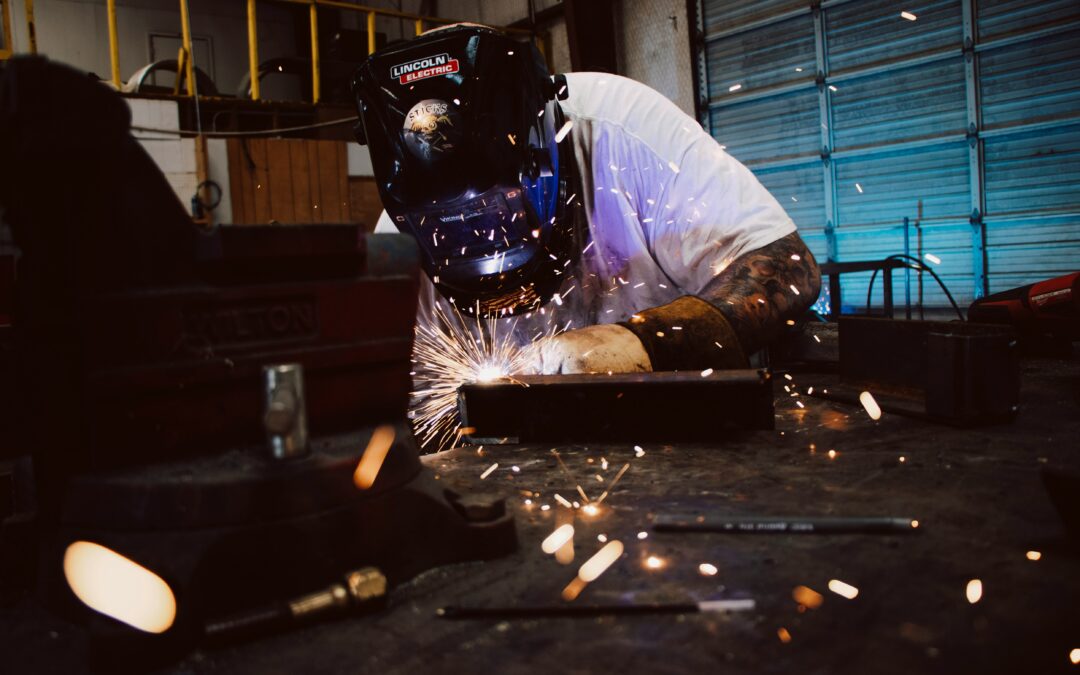When I first thought about welding as a career, I wondered if it was the right path for me. With so many options out there, it’s easy to overlook skilled trades like welding. But the more I learned, the more I realized how important and rewarding this field can be.
Welding isn’t just about joining metal; it’s about building the world around us. From skyscrapers to bridges and cars, welders leave their mark everywhere. If you’re curious about whether welding could be a solid career choice, you’re not alone. I’ve dug into what makes welding unique and why so many people are choosing this hands-on profession.
Understanding the Welding Profession

Welding lets me combine metal parts using heat, pressure, or both, creating strong bonds for industrial and commercial projects. I see welding as a critical trade supporting building, infrastructure, and manufacturing. Welders like me use techniques such as MIG (Metal Inert Gas), TIG (Tungsten Inert Gas), and Stick welding to handle different metal types and thicknesses. For example, automotive shops use MIG welding for repairs, while shipyards often rely on TIG welding for precise joints.
Welding demands technical skill, attention to detail, and steady hand-eye coordination. My daily work often involves interpreting blueprints, preparing materials, and carrying out quality inspections. I sometimes use automated or robotic equipment, especially in large manufacturing settings.
The table below outlines several common welding techniques, their primary applications, and the typical industries employing them:
| Welding Technique | Method | Typical Application | Major Industries |
|---|---|---|---|
| MIG | Gas/Consumable | Car bodywork, general fabrication | Automotive, Manufacturing |
| TIG | Gas/Non-consumable | Aerospace frames, pipes, sculptures | Aerospace, Shipbuilding |
| Stick | Electric current | Heavy construction, outdoors | Construction, Pipeline |
| Flux-Cored | Gasless/automatic | Structural fabrication | Construction, Shipbuilding |
| Submerged Arc | Automated | Large, thick steel plate joining | Shipbuilding, Heavy Industry |
Welders in every sector can pursue certifications for higher skill recognition. The American Welding Society (AWS) offers credentials that boost my employability and earning potential. My advancement in welding depends on my ability to adapt, learn, and operate advanced equipment.
The welding industry rewards practical experience. Employers, such as construction contractors or manufacturing firms, often evaluate welders based on their hands-on ability as well as their technical certifications. Skilled welders with experience using specialized methods or handling complex projects are consistently in demand.
Key Benefits of a Welding Career
Welding offers distinct advantages for those seeking a hands-on, technically skilled role. I find that several key benefits set this career apart across global industries.
High Demand for Skilled Welders
Employers seek welders as industrial sectors expand and experienced tradespeople retire. I see growing demand in construction, manufacturing, energy, and shipbuilding, with the American Welding Society reporting over 360,000 job openings for welders, cutters, solderers, and brazers projected annually from 2022 to 2032. Automation increases efficiency but doesn’t decrease need for skilled welders who handle complex projects and perform quality control.
| Sector | Example Roles | Projected Openings (2022–2032) |
|---|---|---|
| Construction | Structural welder | 120,000+ |
| Manufacturing | Fabrication welder | 90,000+ |
| Energy | Pipeline welder | 50,000+ |
| Shipbuilding | Marine welder | 25,000+ |
Competitive Salary Potential
Welding careers offer earnings that grow with experience and certifications. I note that according to the U.S. Bureau of Labor Statistics, the median annual wage for welders reached $48,940 in 2023, with top earners in specialized roles surpassing $66,250. Employers often pay overtime, location-based premiums, or hazard pay for assignments involving complex technical environments or travel.
| Certification | Median Annual Salary ($) | Top 10% Annual Salary ($) |
|---|---|---|
| Entry-level | 38,000 | 48,000 |
| AWS Certified | 54,000 | 72,000 |
| Pipe/Underwater | 72,500 | 106,000 |
Opportunities for Travel and Advancement
Welding opens paths beyond a local shop floor. I see individuals accepted for projects on oil rigs, bridges, and infrastructure ventures worldwide. Advanced welders move into inspector, supervisor, or instructor positions, and those with specialized skills such as underwater welding travel for short-term, high-paying assignments.
| Opportunity Type | Example Assignment | Typical Bonus/Per Diem |
|---|---|---|
| Domestic travel welding | Pipeline project in Alaska | $700/week per diem |
| International assignments | LNG terminal construction | Paid travel, lodging |
| Advancement (inspector) | QA/QC site management | $12,000+ promotion |
Challenges Faced in the Welding Industry

I experience unique challenges in the welding industry, with physical strain and unpredictable job stability shaping day-to-day realities. Recognizing these obstacles provides a practical view for anyone weighing a career in welding.
Physical Demands and Safety Risks
I encounter substantial physical demands and health hazards in welding environments. Tasks require standing, crouching, or lifting for extended periods. Exposure to high temperatures, ultraviolet radiation, sparks, and toxic fumes is frequent during welding operations. The need for personal protective equipment, like helmets, gloves, and fire-resistant clothing, is constant. Burn injuries, eye damage, and respiratory issues exemplify possible risks.
| Safety Hazard | Risk Example | Protective Measure |
|---|---|---|
| Heat and burns | Molten metal splatter | Fire-resistant gloves |
| UV radiation | Welder’s flash (arc eye) | Auto-darkening helmet |
| Inhaled fumes | Metal fume fever, asthma | Respirator masks |
| Repetitive strain | Back, neck, wrist injuries | Ergonomic work habits |
Job Security and Economic Fluctuations
I navigate cycles of job availability that depend on the health of industries using welding services. Economic downturns, decreased construction activity, or reduced manufacturing can quickly lower demand for welders. Temporary project-based contracts and layoffs occur more in sectors like construction and oil and gas. Geographic mobility is often necessary when local opportunities decrease.
| Factor | Impact on Welding Jobs | Example |
|---|---|---|
| Economic recession | Reduced job openings | 2008 financial crisis |
| Industry shifts | Demand varies by sector | Surge in renewable energy |
| Project dependency | Short-term employment | Pipeline installation |
| Regional opportunities | Job relocation may be required | Gulf Coast shipyards |
Skills and Education Needed for Success
Building a successful welding career depends on targeted education, hands-on experience, and core technical abilities. I rely on both formal training and practical skills to meet today’s industry standards and open long-term opportunities.
Training Programs and Certifications
Technical colleges, trade schools, and union-sponsored apprenticeships offer structured welding programs. In each, I learn theory and safety before gaining shop floor practice. Most programs last 6–24 months, depending on specialization—for example, basic welding certificates run 6 months, while advanced pipeline welding may take 2 years.
Certification from the American Welding Society (AWS) or similar organizations validates my skills and boosts my job prospects. Employers often require AWS Certified Welder (CW) or Certified Welding Inspector (CWI) credentials, depending on job type.
| Training Path | Typical Duration | Certification Awarded | Key Accrediting Body |
|---|---|---|---|
| Trade School Program | 6–12 Months | Welding Certificate | Local College/Institute |
| Apprenticeship | 2–4 Years | Journeyman Certificate | Unions |
| AWS Certification | Varies | CW, CWI, CWE | American Welding Society |
| Advanced Specialty Course | 1–2 Years | Pipeline/Aerospace Cert | Industry Affiliates |
Essential Skills for Welders
Precision, strong hand-eye coordination, and technical knowledge drive my effectiveness as a welder. Reading blueprints and technical drawings lets me plan and execute each weld to strict tolerances. Physical stamina and dexterity allow me to handle heavy equipment and maintain focus through extended shifts.
Problem-solving skills help me adapt techniques for different metals, like steel or aluminum, and environments, such as underwater or high-altitude jobs. I apply knowledge of safety standards to mitigate risks from heat, UV exposure, and hazardous fumes.
| Essential Skill | Example Contexts |
|---|---|
| Blueprint Reading | Industrial plant layouts, bridges |
| Hand-Eye Coordination | TIG welding, precise assembly lines |
| Equipment Operation | Automated robotic welding, power tools |
| Physical Stamina | Shipbuilding, pipeline construction |
| Safety Awareness | Fabrication shops, confined spaces |
Employers value versatile welders with multiple welding process competencies—like MIG, TIG, and Stick—and the ability to quickly adapt in dynamic settings. These skills—supported by accredited training—build my path toward professional advancement in welding.
Who Should Consider a Career in Welding?

Individuals with strong mechanical aptitude excel in welding careers, since daily tasks require operating power tools and interpreting technical drawings. People comfortable in fast-paced industrial environments thrive, especially when handling routine changes or adapting to emerging technologies like welding robots.
Detail-oriented candidates succeed in welding jobs, as precise measurements, clean weld seams, and adherence to safety standards matter in fields such as aerospace and shipbuilding. Physical stamina benefits those drawn to welding roles with frequent lifting, crouching, or extended periods at high temperatures.
Career-focused individuals seeking advancement and long-term employability find value in welding, as roles regularly offer certifications that boost earning potential and access to specialties. Prospective welders with a tolerance for variable job sites adapt well, since work locations may change by project—common in construction, pipeline, or energy industries.
Transitioning military veterans and trade school graduates frequently pursue welding, using their hands-on experience and disciplined work habits to secure entry-level or management positions.
Welding Career Suitability Table
| Attribute | Relevance in Welding | Examples |
|---|---|---|
| Mechanical Aptitude | Needed for machine operation, tool use, blueprint reading | MIG setup, TIG controls |
| Attention to Detail | Ensures weld quality, meets safety codes, minimizes defects | Blueprint accuracy, seam checks |
| Physical Stamina | Supports physical demands in difficult environments and prolonged duties | Bridge building, refinery work |
| Adaptability | Useful for adjusting to multiple work sites or variable contract lengths | Pipeline jobs, shutdown maintenance |
| Certification Focus | Increases job prospects and salary potential in competitive sectors | AWS CW, CWI |
| Technical Knowledge | Enables use of specialty welds and industry standards | Aerospace repair, nuclear piping |
| Discipline | Maintains consistent safety and output in hazardous conditions | Military-trained welders, union shops |
Welding best suits those motivated by hands-on tasks, technical skill application, and dynamic job environments. My experience shows candidates from diverse backgrounds succeed when they combine technical certification with strong work habits.
Conclusion
After weighing the rewards and challenges of welding I’ve realized it’s a path that truly appeals to those who thrive on hands-on work and technical problem-solving. The sense of accomplishment from building something tangible is hard to match in other careers.
If you’re driven by curiosity and enjoy working with your hands welding offers a dynamic and respected profession. With the right training and mindset you can carve out a fulfilling and prosperous future in this essential trade.
Frequently Asked Questions
What is welding and why is it important as a career?
Welding is the process of joining metal parts using heat, pressure, or both. It’s a crucial trade for building structures like bridges, skyscrapers, and vehicles. A welding career is important because skilled welders are needed across many industries, offering job stability and good pay for those who enjoy hands-on work.
What are the different types of welding techniques?
Common welding techniques include MIG (Metal Inert Gas), TIG (Tungsten Inert Gas), and Stick welding. MIG is often used for quick, clean welds in manufacturing. TIG offers precise, high-quality welds, ideal for aerospace. Stick welding is versatile and widely used in construction and repair work.
What certifications are recommended for welders?
Certifications from the American Welding Society (AWS), such as AWS Certified Welder (CW) or Certified Welding Inspector (CWI), are highly valued. These certifications prove your skills, increase your employability, and can help you advance to higher-paying positions or specialized roles.
What are the daily responsibilities of a welder?
A welder’s daily tasks include reading blueprints, preparing metal parts, performing various welding techniques, ensuring quality through inspections, and maintaining safety standards. In large workplaces, welders may also use automated equipment to boost productivity and precision.
What are the key benefits of pursuing a welding career?
Welding offers high demand for skilled workers, competitive salaries, and opportunities for career advancement. It allows for travel and involvement in major projects globally. Many welders enjoy job variety, hands-on work, and the potential for bonuses or per diem on travel assignments.
What challenges do welders face?
Welders often deal with physical strain, exposure to high heat, UV radiation, and hazardous fumes. Job stability can fluctuate based on economic conditions and industry health, sometimes requiring welders to relocate for work or accept temporary contracts.
What skills and education are needed to become a successful welder?
Successful welders need strong hand-eye coordination, precision, problem-solving skills, and technical knowledge. Most complete formal training through trade schools, technical colleges, or apprenticeships, lasting 6–24 months. Earning industry certifications further improves job prospects and career growth.
Who is a good fit for a welding career?
People with mechanical aptitude, attention to detail, physical stamina, and adaptability thrive in welding. Motivated individuals who enjoy hands-on tasks and technical challenges are well-suited. Trade school graduates, military veterans, and anyone with discipline and a willingness to learn can succeed.
Can welding provide opportunities for career advancement?
Yes, experienced welders can advance to roles like inspector, supervisor, or specialize in advanced welding techniques. With certifications and skill development, welders can move into management or training positions, or pursue high-paying jobs in industries like aerospace or energy.
Is welding a stable job with good long-term prospects?
While welding offers strong demand and good wages, job stability can depend on the health of key industries and local market needs. Skilled, certified welders who are willing to travel or learn new techniques usually have better long-term prospects and career flexibility.

